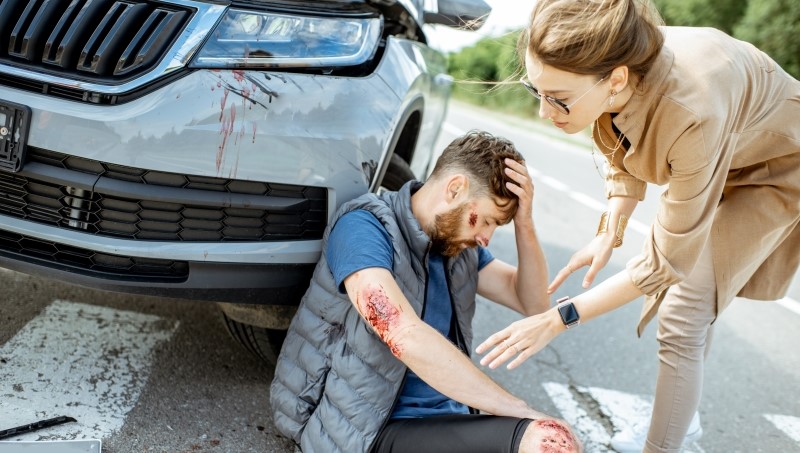When a car hits a pedestrian, the pedestrian almost always suffers far more severe injuries than the driver. That’s because the driver was protected by the car, the seat belt and air bags, while the pedestrian usually had no protection at all. But does that mean that the driver is always at fault for the accident? No, it does not.
Figuring out who is at fault in a pedestrian accident is a complex process and there are a lot of questions that have to be answered before fault can be determined. At the same time, there is also a lot of evidence that has to be collected and preserved to show and prove what really happened.
In addition, Ohio has a modified comparative fault rule, which has an impact on how much the pedestrian can collect even if the driver was found mostly at fault. Specifically, the injured party can collect damages, provided they were less than 51% at fault.
However, their award will be reduced by the percentage they were found to be at fault. So if they were 40% at fault, and their damages are $100,000, they will only get $60,000. To make sure you get fairly compensated, you should get the help of an experienced pedestrian accident lawyer.
Who Is at Fault in a Pedestrian Accident?
Both drivers and pedestrians have the obligation to act responsibly and follow the traffic rules. Acting responsibly means that they should not engage in distracted driving – or walking. There should also be no texting while driving or while walking across the intersection. Needless to say, neither driver nor pedestrian should be under the influence of alcohol or drugs.
In order to protect themselves and those who share the road, drivers need to be aware and respectful of any and all other participants they encounter, including other drivers, pedestrians, bicyclists, and everyone else.
At the same time, pedestrians too have responsibilities when it comes to avoiding accidents. And if an accident has already happened, you need an experienced personal injury attorney to help you protect your rights.
Rules at Intersections
Ohio has traffic laws that legislate proper behavior at intersections and on all roads and streets. They are designed to prevent accidents, but they can only work if they are followed.
In addition, it’s important to practice defensive driving as well as walking. Just because you may technically have the right of way, you shouldn’t force it, especially as a pedestrian. That could cost you your life.
Who Is at Fault?
At times, the case is very clear. Let’s say a pedestrian was crossing at a traffic light that told them to walk, and a speeding car was running the red light and hit them. In that situation, it is very clear who was at fault: the driver.
The driver violated key traffic rules, and by doing so caused the injuries to the pedestrian. Thereby the driver has to compensate the pedestrian for their injuries and other damages.
On the other hand, the driver may have been on their way to work or the store, when suddenly a pedestrian literally walked in front of the car without looking left or right. The driver might even have braked and swerved in an effort to avoid hitting the jaywalking pedestrian, but could not avoid a collision.
In this case, the pedestrian was at fault, at least for the most part, and will probably be liable for any damage to the car as well as for any injuries suffered by the driver. Meanwhile, the pedestrian will probably get nothing from the driver because they were more than 51% at fault for the accident.
Jaywalking And the Law
Laws against jaywalking were introduced in the 30’s when the auto industry put pressure on the government to enact them. The idea was that cars had the right to use the roads and pedestrians had to stay out of the way, with the exception of specially designated areas.
These jaywalking laws have been enforced around the country since that time, albeit unevenly. They have often led to the police giving expensive tickets for jaywalking to people who could least afford them.
Recently, some changes have gotten under way. Virginia, for example, has decriminalized jaywalking in March 2021. California just passed the “Freedom to Walk” act on September 30th that will decriminalize jaywalking effective January 1, 2023.
However, while jaywalking won’t lead to automatic tickets anymore in those states, pedestrians still have to cross streets safely and use good judgment while they do so. In the meantime, you can look up the specifics of pedestrian and crosswalk laws in all 50 states.
You’ll find that quite a few states don’t specifically prohibit jaywalking but they state something to the effect that pedestrians who cross a street where there is no crosswalk must yield to cars. Ohio law also states that drivers must use due care.
What You Should Do
If you’ve been injured in a pedestrian accident through no fault of your own, or if you were only at fault in a small way, be sure to speak to an experienced pedestrian accident attorney. They can help you assemble the evidence and fight for fair compensation so you won’t make mistakes that could cost you a lot of money or even cause you to lose your case. Call or email us for a free case evaluation. We will be happy to talk with you.



